Gold price waits for rates clues from Jackson Hole
Political turmoil in the US has the potential to 'help gold in the short and longer term'
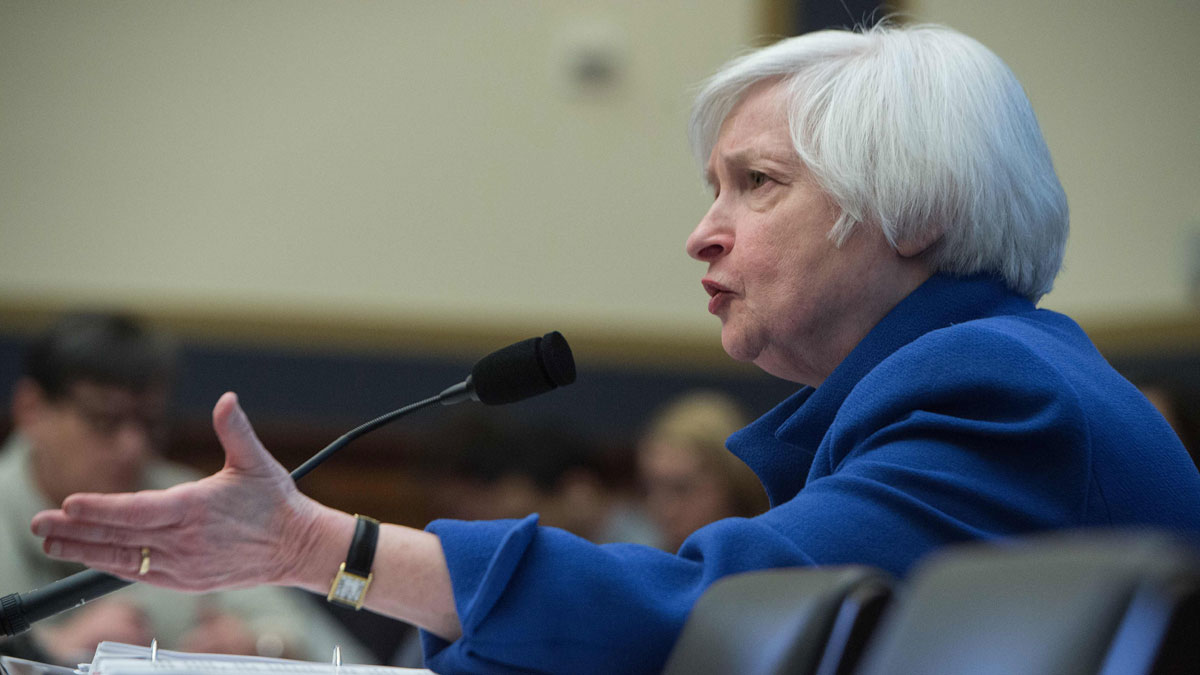
Gold price retreats on hawkish Fed comments
24 March
Concerns over the prospects of more US rate rises has seen the gold price soften after a brief "safe haven" bounce in the wake of the Brussels terror attack.
The Week
Escape your echo chamber. Get the facts behind the news, plus analysis from multiple perspectives.

Sign up for The Week's Free Newsletters
From our morning news briefing to a weekly Good News Newsletter, get the best of The Week delivered directly to your inbox.
From our morning news briefing to a weekly Good News Newsletter, get the best of The Week delivered directly to your inbox.
Gold has risen around 20 per cent this year amid a global economic malaise, but there was speculation it would begin to wilt as the worst of the storm clouds appear to have passed and investors return to speculating on when the Federal Reserve might vote again to raise interest rates.
The US central bank sounded a dovish and cautious tone last week, lowering its expectations from four rates hikes this year to two. Rates on hold for longer would boost non-yielding gold relative to other, income-generating assets and would hit the dollar, against which it is a hedge.
Gold was also on the rise earlier this week, after the terrorist incident in Brussels, but this short-term bounce dissipated as expected over the subsequent sessions.
However, the outlook has changed following Tuesday's comments from Patrick Harker, the Philadelphia Fed president, who said the US's strong labour market would filter through to inflation and that rate-setters should consider renewed policy tightening as soon as next month.
A free daily email with the biggest news stories of the day – and the best features from TheWeek.com
The Financial Times reports the dollar has been recovering rapidly and gold fell more than two per cent to $1,218 an ounce. It was below $1,215 at one point, significantly down on the $1,280 peak reached earlier this month.
“With the long weekend looming and the market overly long, this is a perfectly understandable and somewhat overdue move, as we see profit-taking and book squaring ahead of Easter,” David Govett, the head of precious metals at broker Marex Spectron, told the Wall Street Journal.
Gold set to resume plunge on hint of April rates hike
22 March
Gold is tipped to resume its downward spiral after a Federal Reserve official hinted that the next US rates rise could come as early as April.
No sooner had prices steadied on Tuesday, after three days of falls, than the metal looked at risk of further weakness as the dollar edged up in the wake of the speculation.
Spot gold was trading up 0.1 per cent at $1,244.3 an ounce by 0059 GMT, reports the Financial Express. Prices hit the lowest in three sessions, at $1,240.30 an ounce, on Monday.
Atlanta Fed president Dennis Lockhart’s prediction of a rates rise next month was another sign that policymakers are relaxed about allowing US policy to diverge from other leading economies. It has been citing the continued labour market strength as a sign that the domestic economy is robust even in the face of an apparent global slowdown.
Higher borrowing costs dampen the appeal of gold because it doesn't pay interest or offer returns like assets such as bonds and equities.
Optimism had grown among analysts during the steadying of the last seven days. Speaking to the Financial Times last week, HSBC metals analyst James Steel said: "We seem to be well into this period but given that rate hike expectations continue to be pushed into the future [HSBC economists expect a hike in June], we expect the gold rally to last even longer."
That confidence came off the back of the news that gold is the best performing major asset in the world so far this year and enjoying its best quarter since 1986, with an 18.2 per cent rise. "Gold bugs are in a good mood," wrote Joel Lewin.
Gold price hits two-week low ahead of Fed meeting
15 March
Gold is enduring its first proper wobble of 2016, hitting a two-week low overnight on the back of a third consecutive session of decline.
After dropping on Friday after reaching a new 2016 high earlier in the session, the metal finished down again on Monday and at the end of Asia's Tuesday trading overnight. At a low of $1,225 an ounce, the spot price was three per cent down from last week's $1,282, notes Bullion Vault.
A recent resurgence on equities markets - or rather, the underlying sentiment driving this - has been partly to blame for the apparent turnaround. Pessimism on the global economy has eased as China has moved to reassure on its growth prospects, which means investors are moving back into risk assets and easing up on their positions in "safe havens" such as gold.
More pertinently this week, investors are hedging bets ahead of the latest meeting of the Federal Reserve tomorrow. While the likelihood of the central bank increasing rates for the first time since December's hike is nearly nil, there are signs the economy remains resilient and there could be a bullish tone on future rises.
New data this month revealed 242,000 jobs were created in the US in February, indicating that the labour market remains strong. With the unemployment rate at less than five per cent, this should eventually drive up inflation, too, although the subdued wages picture acts as a drag.
"We are waiting for the outcome of the Fed meeting and data coming from the United States is showing that the state of the economy is not bad," Ronald Leung, the chief dealer at Lee Cheong Gold Dealers, told Reuters. "I think there are too many long positions [bets on more gold-price rises] in the market. They are taking some profit."
There are some analysts, though, who say the resilience of gold to keep well above $1,200 this year indicates that the upward trend remains intact and that underlying economic concerns, accommodating monetary policy and improving supply and demand factors should help it resume its rally in the near future.
"In our view, gold's uptrend remains intact," Canada-based investment and bullion bank Scotia said in a note on Friday. It went on to presciently predict that profit-taking "could lead to consolidation in the near-term, but we continue to believe that gold is gathering momentum before making a run for the $1300s level".
After a volatile day's trading amid a more mixed equities picture, gold was holding near its new lower level on Tuesday at $1,231 an ounce.
Gold price remains strong after hitting another 2016 high
14 March
Gold continued its excellent start to 2016 and hit another high for the year on Friday, with the spot price at one point touching $1,282 an ounce.
This came in the wake of the decision of the European Central Bank to reduce its main interest rate to below zero while reducing already negative bank deposit rates and ramping up its monthly bond-buying programme - a hefty package of stimulus emphasising how accommodating monetary policy is at the moment.
Thursday's news was initially greeted with wild gyrations as investors struggled to digest the information and priced out further rates cuts following comments from ECB president, Mario Draghi. Gold soared as the euro recovered from an early slump and equities nosedived. By early on Friday, the metal had hit its latest high, up 21 per cent for the year as a whole.
Prices did dip back later in the day, as markets belatedly welcomed the central bank action, falling to $1,259 an ounce while this morning they were around $1,257. But the trend this year is clear and the reduced chances of rates rising is a bullish indicator as tighter policy tends to boost the dollar and income-generating rival assets.
The Federal Reserve will update the market on its own policy stance this week, with even continuing strength in the labour market unlikely to prevent it kicking a further rate rise back until at least June.
Another strong sign for gold is that fundamental supply and demand factors are becoming more supportive of higher prices. CNBC reports that emerging market demand is surging in countries such as Indonesia, Vietnam, Malaysia and, crucially, China as their currencies slump and investors flock to the safe haven of gold, which is often traded as a pseudo currency.
Meanwhile, supplies of physical gold are dwindling, according to World Gold Council, which said total supply declined four per cent to a six-year low in 2015 of 4,258 tons.
All of this means prices are likely to remain stable around current high levels, say many analysts. "In the longer term, gold will probably stay above $1,200, around the $1,250 area, while $1,300 represents a strong resistance level," ETF Securities analyst Martin Arnold told Reuters.
UBS says much the same, but it added that the $1,300 price range that is such a strong resistance level is so because the current rally is "unsustainable". Fears of a recession to come are overblown, it says, and the Fed will not completely change course on its rates policy following the hike back in December.
"Investors should consider reducing their gold holdings if the price approaches $1,310 an ounce over the coming weeks and increasing them if prices fall back to $ 1,100 an ounce," the bank advises.
Gold price could be set to break $1,300
08 March
The gold price appears to have broken free of all its inhibiting correlations and could push on beyond $1,300 an ounce in the near future, according to one analyst.
On Friday, the latest data from the US Labor Department revealed the economy had added 242,000 jobs in February, well above expectations and the sort of figure that would once have triggered rampant speculation of another rates rise, following December's first increase in nearly a decade. Rates rises tend to boost income-bearing assets and the dollar, which in turn hurts gold.
Having hit a high for 2016 of close to $1,280 an ounce just before the announcement, the spot price did dip around $10.
But the fall was short-lived and gold rose again on Monday and through the early part of Tuesday trading in Europe, reaching around $1,274 an ounce by 12.20pm.
It also rose through the early part of Monday, even though the dollar, against which it is a hedge, was also on the up, before eventually falling back. Gold has also remained around 20 per cent up since the start of the year in spite of a recent strong recovery in equities - although, again, this rally did fall away yesterday.
An eventual decline in equities explains some of this counter-intuitive behaviour: notwithstanding a recent upswing, the markets remain highly volatile as a result of profound concerns over the global economy, which in turn prompts a rush to "safe havens" such as gold. Added to that, US wages have remained subdued, which dampens the case for a rates hike.
"So far, the rally in gold has been based on the repricing of a Fed rate hike (which) the market expects to be delayed for some time, in contrast to the view at the beginning of the year that the Fed could hike again as soon as March," Danske Bank senior analyst Jens Pedersen told Reuters.
Scotiabank, the Canada-based investment and bullion bank, in its latest technical analysis, said it would be "interesting to see in the next set of data out this Friday whether this triggered renewed buying or additional profit taking," reports BullionVault.
"Our next target level for gold is $1308 (the January 2015 high), while the near-term support stands at $1246," added the bank.
Gold prices are rising – but is it a bad investment?
4 March
Prices may be rising but gold has "no place" in an investment portfolio, argues The Times commentator Oliver Kamm.
Bullion Desk reports this morning that the metal set a fresh high at $1,268.20 yesterday, technically breaking out of a pennant formation.
Taking a broader-term view, Kamm points out that gold prices have risen by 16 per cent and argues this is because low interest rates means the opportunity costs of holding the metal are reduced.
"Gold investors need to pay the costs of storing their bullion, but at the same time (in countries with negative interest rates, including the eurozone) banks are being charged just to hold deposits at the central bank," he writes.
But Kamm still feels gold's inherent unpredictability makes it an unwise investment. He admits he is "clueless" on the question of whether the bull market in gold will continue and adds: "Gold doesn't pay any cash. If you own gold, you get no dividends or interest from it. It just sits in the vault.
"You hope that someone will pay a higher price for it later on, but there's no objective way, even in principle, of estimating its intrinsic value. Hence investing in gold is pure speculation."
Nevertheless, Will Adams of Bullion Desk indulges in just that speculation, writing: "Gold prices broke higher yesterday and we wait to see if they gather momentum, given other markets are seeing risk-on we would not be surprised to see gold prices struggle."
Gold price: three reasons SocGen reckons you need to sell
2 March
Defying all predictions of a New Year slump, the gold price has surged around 20 per cent to as high as $1,260.
However, investment bank Societe Generale believes now is the time for investors to sell, with the price set to return to closer to $1,150. It says the current rally has become "unsustainable" - here are three reasons why:
1. Recession fears overblown
Gold is the classic "safe-haven" trade and buying is being driven by fears the global economy - specifically the US economy, against which it is most closely tied - is set for a severe slowdown and, in the words of The Guardian, even "a full-blown economic crisis, like in 2008".
SocGen reckons these fears are overdone. It points to solid job growth that has persisted in recent quarters as a sign that the underlying strength of the US economy is unaffected by a China growth slowdown. Better-than-expected manufacturing data yesterday and an uprated expansion reading for the fourth quarter last week will only add fuel to this optimism.
2. Interest rates underestimated
Related to the above, SocGen says the market is currently not pricing in the chances of the US Federal Reserve following up its December rates rise with at least one more this year and continuing the upward trajectory next year. Rates hikes tend to boost income-generating alternatives to gold as well as the dollar.
"Our economists remain confident that the recent financial market turmoil and slowdown in emerging markets are unlikely to cause a recession in the US. If they are right, then the market should gradually start pricing in a high probability of one rate hike this year followed by more next year as the US labour market is becoming tight," the bank's analysts wrote in a note reported by CNBC.
3. Gold is currently defying gravity
The precious metal is enjoying a strong start to 2016 but other hard commodities are not. That's partly explained by the fact that gold is traded more as a pseudo currency than a metal and has unique appeal as a store of value when times are tough.
However, SocGen insists it is "unusual for the gold price to persistently diverge from the trend in the broader commodities market" and that the price is therefore due a minor correction.
Investors aren't paying heed yet
Investors clearly don't recognise the picture SocGen is painting. Investments into gold-tracking ETFs are surging and the price has become decoupled from some of its key inverse correlations, remaining high even despite a dollar rebound driven by the slump in the pound in recent weeks.
They're also getting support from the likes of Deutsche Bank, which reckons prices will remain steady in 2016 and average $1,230 an ounce in the final three months of the year. The spot price of gold was a shade under $1,230 in European trading this morning, despite a broad-based markets' rally extending into a third day.
Gold price rally could last as it breaks free of dollar drag
25 February
The gold price is the best performing asset class of 2016 and could be set to maintain its strong rally after its traditional negative correlation with the dollar broke down.
Yesterday, amid a fall in European markets prompted by the latest slide in oil, the metal continued to benefit from "safe-haven" trading and surged more than $30 to peak above $1,250 an ounce in New York. This was despite the dollar also rising as Brexit fears hit the pound and the euro dipped on hopes of further stimulus from the European Central Bank.
"Gold is rising on the back of weak risk appetite, but what stands out is that the market is rising even though the dollar is higher as well," Jens Pedersen, a senior analyst at Danske Bank, told Reuters. "We've definitely reached a new range above $1,200 due to repricing risks of Fed rate hikes."
Pedersen's reference to interest rates highlights what many believe to be the key remaining correlation for gold. It tends to do badly when rates are rising as this boosts rival, interest-bearing assets to send the dollar on a prolonged upswing that investors find difficult to ignore. But with fears over the global economy growing, expectations for rates are now much more subdued.
City AM cites this, as well as a general sense that policymakers have run out of reliable stimulus options, as making a case for the gold rally to hold and even to gather momentum. It also reports a potential pick-up in inflation, against which gold is seen as a store of value.
Plus there is the general pressure that has built up behind gold. Mining.com notes that inflows to passive funds tracking the performance of the metal so far in 2016 have already more than exceeded the total outflow for 2015, when the gold price fell for the third straight year.
Of course, some analysts reckon this has built up downside pressure that would trigger a rapid covering move if prices did turn materially – and that is precisely what could happen, if the global economy does pull through this wobble and interest rate rises return to the agenda. Goldman Sachs has repeatedly asserted that gold will return to around $1,000 in the next 12 months.
As at 11am, the spot price has softened to $1,234 as wider markets bounced back from their Wednesday fall.
-
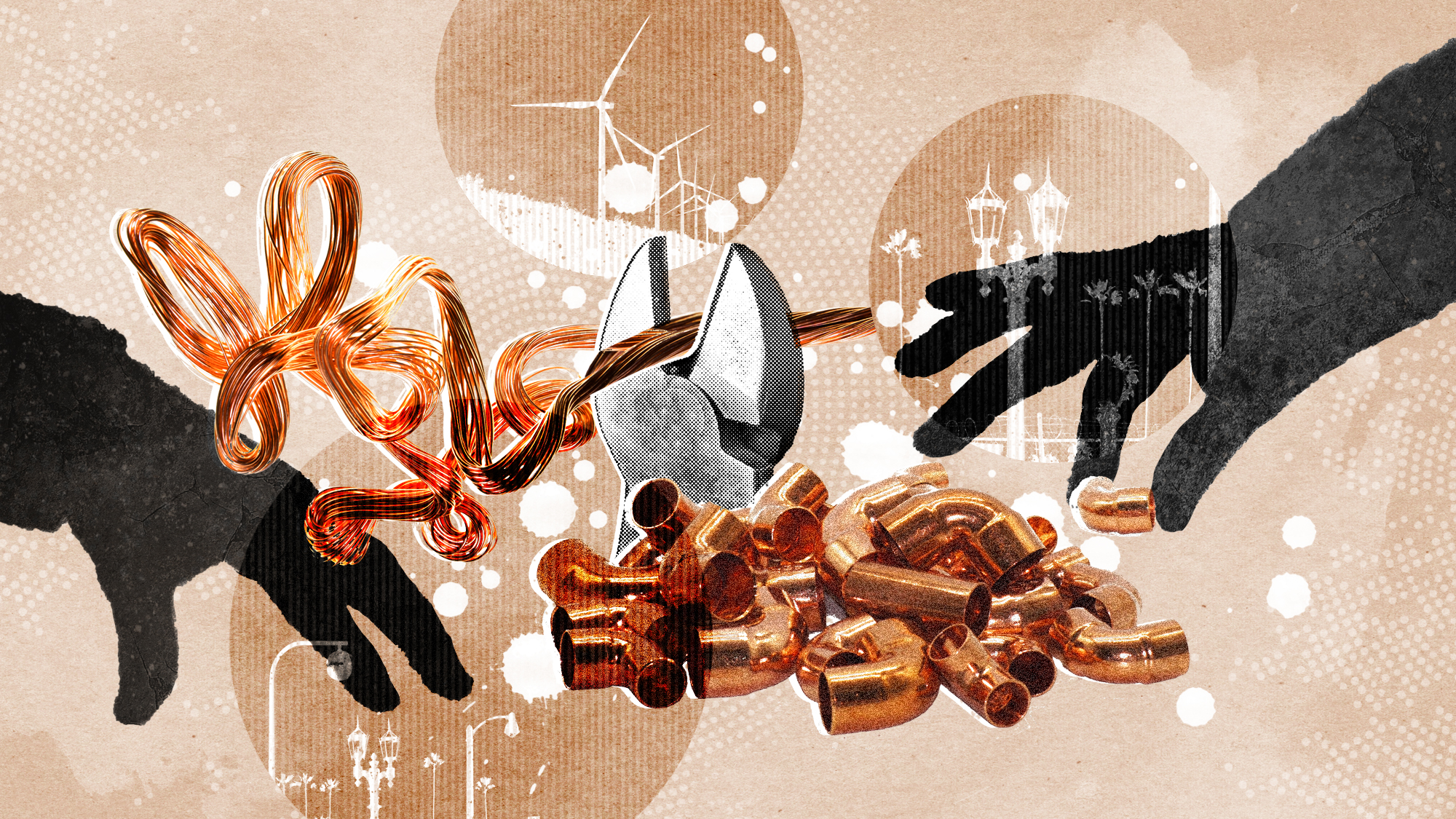 The great global copper swindle
The great global copper swindleUnder the Radar Rising prices and easy access makes the metal a ‘more attractive target for criminals looking for a quick profit’
-
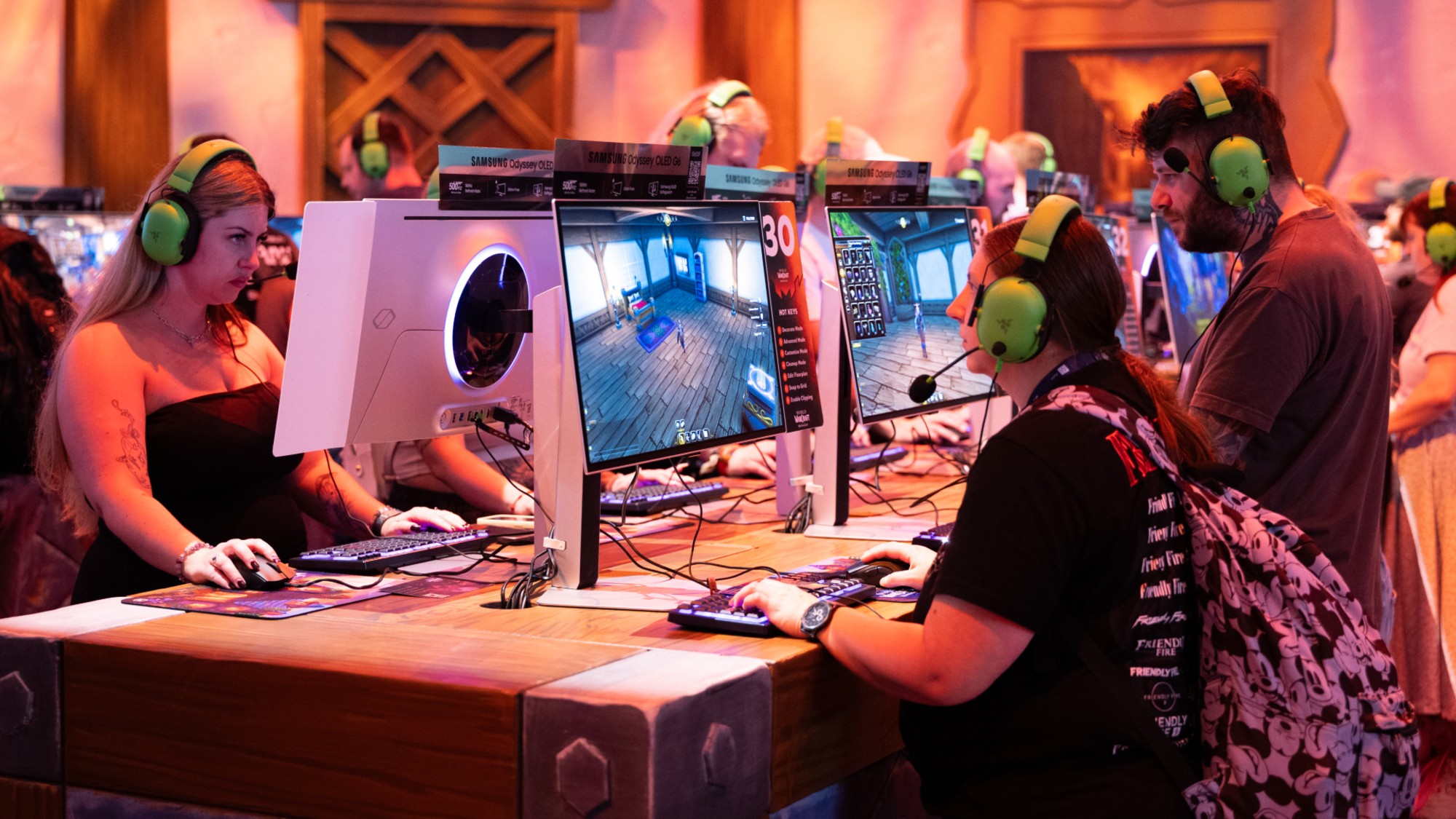 ‘They’re nervous about playing the game’
‘They’re nervous about playing the game’Instant Opinion Opinion, comment and editorials of the day
-
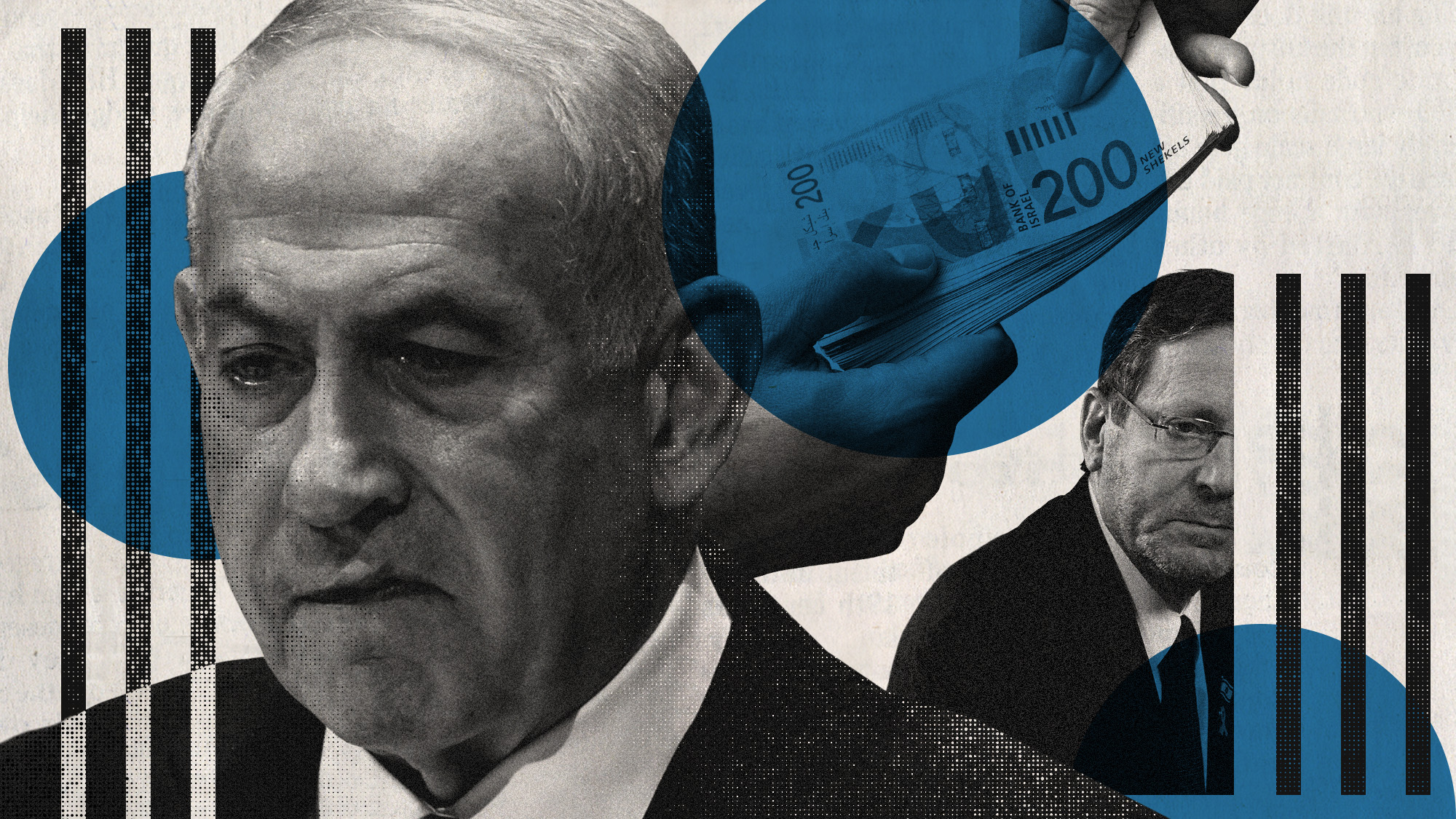 Will Netanyahu get a pardon?
Will Netanyahu get a pardon?Today's Big Question Opponents say yes, if he steps down
-
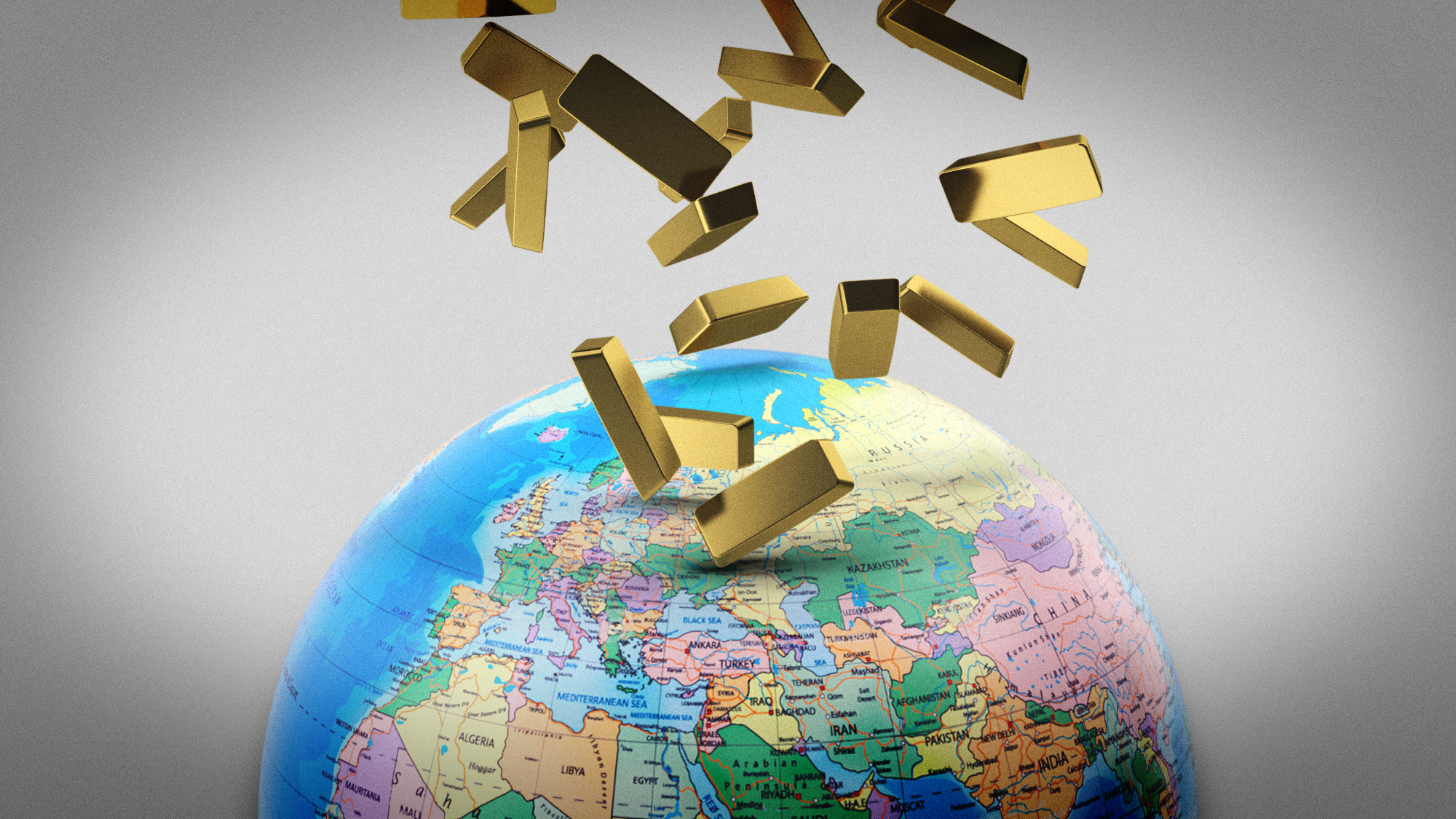 What a rising gold price says about the global economy
What a rising gold price says about the global economyThe Explainer Institutions, central banks and speculators drive record surge amid ‘loss of trust’ in bond markets and US dollar
-
 Gold tops $4K per ounce, signaling financial unease
Gold tops $4K per ounce, signaling financial uneaseSpeed Read Investors are worried about President Donald Trump’s trade war
-
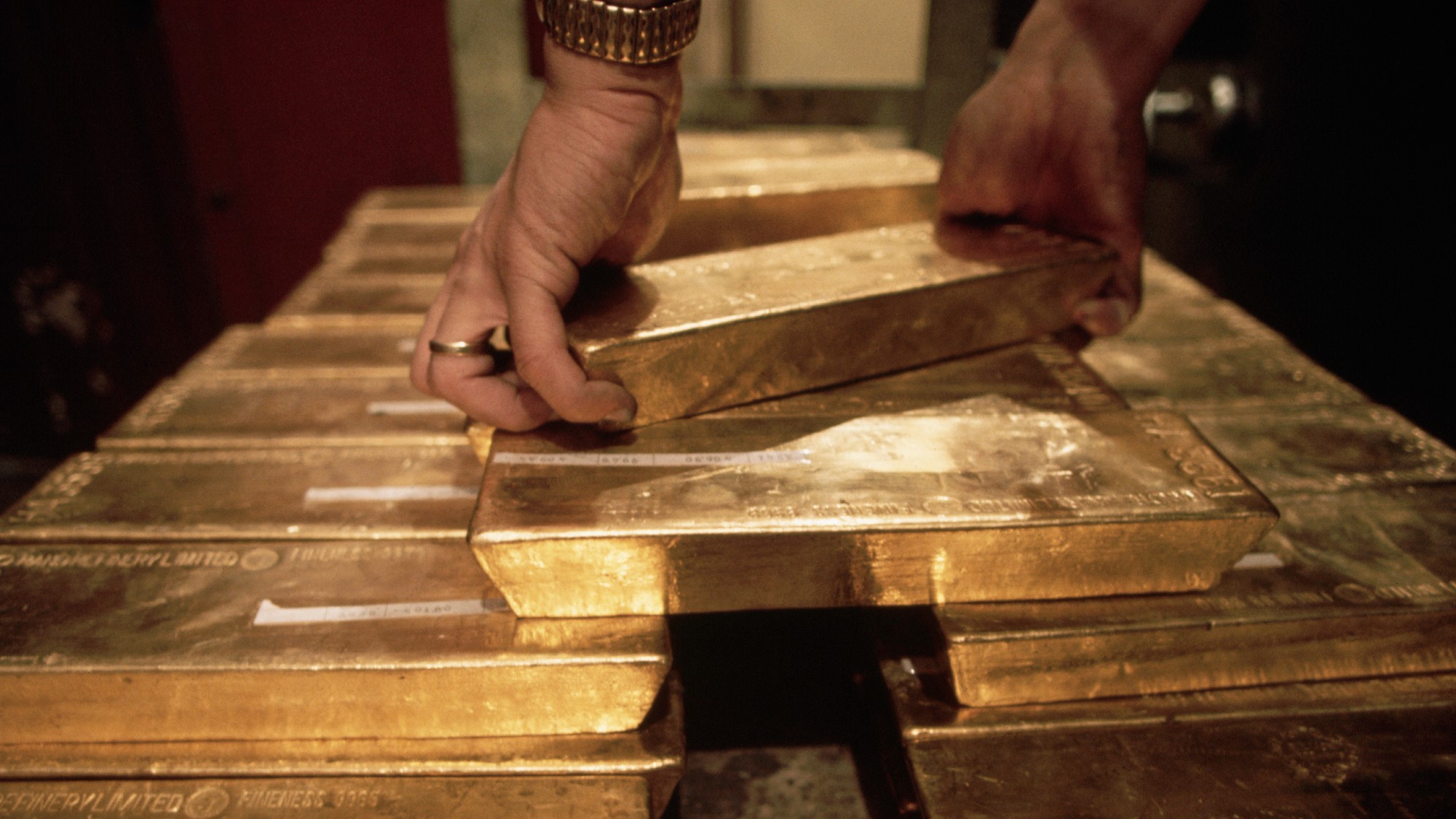 Safe harbor: Gold rises as stocks sink
Safe harbor: Gold rises as stocks sinkfeature It's a golden age for goldbugs
-
 What rising gold prices can tell us about the economy in 2024
What rising gold prices can tell us about the economy in 2024The Explainer Market hits all-time high, boosted by a weakening US dollar and rising global tensions
-
 Gold’s ‘flash crash’: what the experts think
Gold’s ‘flash crash’: what the experts thinkfeature Bad news, good news and a loss of faith
-
 What is the price of gold and when is best to buy?
What is the price of gold and when is best to buy?Speed Read Economic and geopolitical uncertainty traditionally drives investors to reliable metal markets